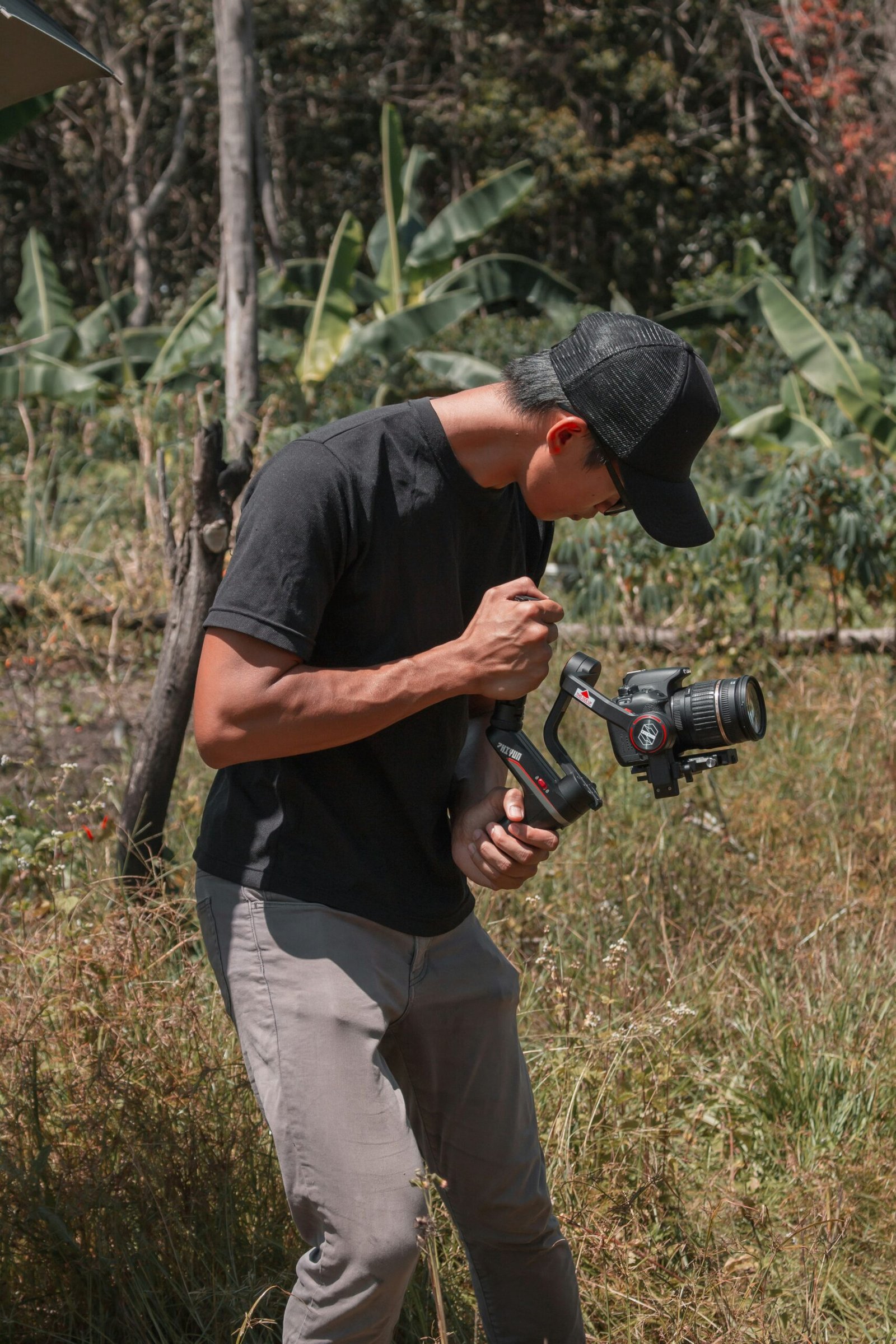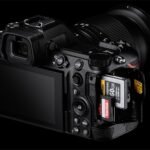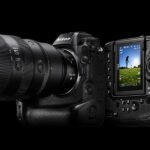
Introduction to Headshots
Professional Headshots. In the modern professional landscape, the significance of headshots cannot be underestimated. Be it actors, corporate executives, or freelancers, a compelling headshot serves as a cornerstone for professional identity. A high-quality headshot does more than just display an image; it exudes professionalism, confidence, and approachability – attributes quintessential for making a formidable first impression.
In today’s digital age, headshots have become imperative across various platforms. For job applications, a well-crafted headshot can make the difference between catching a recruiter’s eye or being overlooked. On social media profiles, it transform a faceless account into a relatable persona, paving the way for meaningful connections. Furthermore, for professional portfolios, a headshot conveys credibility and authenticity, essential for securing new opportunities and collaborations.
The stakes are even higher for certain professions. For actors, a striking headshot can be the ticket to a breakthrough role. For corporate executives, it solidifies their presence in the industry, aiding in personal branding and networking. Freelancers, on the other hand, rely on headshots to build trust with potential clients in an increasingly competitive marketplace.
Thus, investing in a professional headshot is not merely about aesthetics; it is a strategic move that can significantly impact one’s career trajectory. As we delve deeper into the nuances of creating professional and impactful headshots, it becomes clear why this aspect of personal branding has garnered such prominence in 2024.
The Evolution of Headshots in 2024
The landscape of professional headshots has undergone significant transformation in 2024, moving away from the rigid, overly staged images of past decades to more authentic and engaging photographs. This shift reflects a broader cultural emphasis on genuine representation and transparency, where images aim to capture not just appearance, but also the personality and essence of the individual.
One of the key trends in headshots today is the focus on creating images that feel natural and less posed. Professionals are increasingly seeking headshots that resonate with their personal brand, showcasing not only their professional demeanor but also their unique characteristics and authenticity. This approach helps in making a stronger connection with the viewer, whether it’s a potential employer, client, or collaborator.
Another significant change is the preference for diverse backgrounds and settings that provide context and depth to the headshot. While traditional plain backgrounds still have their place, many are opting for more dynamic environments that tell a story about who they are and what they do. This could be their office, a creative studio, or even an outdoor setting. These elements contribute to a more holistic representation of the individual.
Evolving technologies also play a crucial role in this shift. High-resolution cameras, advanced lighting techniques, and digital editing tools allow photographers to create high-quality, stunning images that still maintain a natural look. Furthermore, photographers and subjects alike are becoming more skilled in leveraging these tools to enhance the authenticity of the final product.
In essence, the modern headshot in 2024 is less about conforming to a standard template and more about expressing individuality while maintaining professional integrity. This evolution underscores the importance of a balanced approach, blending professional aesthetics with personal flair to create impactful and memorable images.
The Importance of Lighting and Composition
Lighting and composition are foundational elements in creating professional and impactful headshots. Effective lighting, whether natural or studio, can significantly enhance the quality of a headshot by highlighting facial features and creating a polished, professional appearance. Understanding and implementing proper lighting techniques is essential for any photographer aiming to produce high-caliber headshots.
Natural light often hailed for its accessibility and flattering softness, can be an excellent choice for headshot photography. Early morning or late afternoon are optimal times for utilizing natural light, as the sun’s position produces a softer, more diffused illumination that can accentuate the subject’s features without causing harsh shadows. Photographers can also make use of reflectors to bounce light back into the subject’s face, thereby achieving a balanced and evenly lit image.
Alternatively, studio lighting offers greater control and consistency. Soft studio lights, such as softboxes or ring lights, can create a clean and controlled light environment, reducing unwanted shadows and evenly illuminating the face. The use of key lights, fill lights, and backlights in a three-point lighting setup ensures depth, dimension, and a flattering look. Soft lighting can help reduce blemishes and give skin a smoother appearance, which is particularly advantageous for professional headshots.
In conjunction with proper lighting, composition plays a pivotal role in enhancing the overall impact of headshots. The rule of thirds is a fundamental guideline, where placing the subject off-center creates a more dynamic and engaging image. Additionally, ensuring the subject’s eyes are level with the camera and focusing on a clear, non-distracting background can contribute to a professional look. Paying attention to headroom and the space around the subject can also help maintain balance and ensure that the headshot is framed appropriately.
Ultimately, the harmonious blend of well-executed lighting and thoughtful composition not only enhances the subject’s appearance but also conveys professionalism, making it a critical aspect of impactful headshot photography.
Wardrobe and Styling Tips
Choosing the right wardrobe and styling for your headshots is crucial in creating a professional and impactful image. Selecting clothing that enhances your brand or profession ensures your headshot effectively represents your identity. Opt for simple, solid colors such as navy, gray, or soft pastels, as they tend to photograph well and keep the focus on you, the subject. Suit jackets, blazers, and collared shirts are excellent choices for a corporate look, whereas creative professionals might prefer a more relaxed, yet polished, style.
It’s advisable to avoid busy patterns and overly bright colors, as they can distract from your face and muddle the overall composition of the photograph. Additionally, steer clear of logos and text, which can appear unprofessional and take away from the clean and elegant look of a headshot. Neutrals and earth tones are always safe choices and can be easily layered to add depth and interest to your outfit.
Hair and makeup play a significant role in presenting a polished yet natural appearance. For hair, aim for styles that are neat and complement your face shape. Ensure your hair is freshly washed and styled to avoid a greasy or unkempt look. If opting for a haircut or color, schedule it at least a week before your shoot to allow some natural settling.
Makeup should be understated and aim to enhance your natural features. Opt for a matte foundation to reduce shine, subtle eye makeup to highlight your eyes, and neutral lip colors that do not overpower your face. Men may also benefit from a touch of powder to minimize shininess. Above all, the goal is to look like the best version of yourself without appearing overly made-up.
With appropriate clothing and considerate grooming, you can effectively ensure that your headshots not only reflect your professional persona but also resonate well with your intended audience.
Mastering Expression and Posing
In the realm of professional headshots, mastering expression and posing is paramount. A headshot should exude confidence while maintaining an approachable aura, as these qualities collectively contribute to portraying an individual as both professional and personable. One’s expression can significantly impact how they are perceived; therefore, it’s essential to strike the right balance.
To achieve this, individuals must work closely with their photographer. Communication is key. Sharing the vision you intend to project can help the photographer guide you towards expressions and poses that best represent your professional demeanor and unique personality. For expressions, a genuine smile often resonates well, as it emits warmth and approachability, which are especially valuable in client-facing or leadership roles.
Posing, on the other hand, is an art that intertwines with expression. Posing should not only convey professionalism but also reflect individuality. Relaxed, yet upright postures often work best, embodying readiness and enthusiasm. Simple adjustments—like angling the shoulders slightly or leaning forward a bit—can add dynamism to the headshot, making it more engaging.
Body language also plays an integral role in the effectiveness of a headshot. Arms crossed might imply confidence but can sometimes appear closed or defensive. Conversely, open postures with slightly bent arms can suggest approachability and openness. Subtle hand placements, such as near the jawline or lightly resting on a surface, can add an element of thoughtfulness or poise. The alignment and visibility of the neck can also impact perception, often adding to the elegance and stature of the shot.
Mastering expressions and poses in headshots is a collaborative effort that calls for a fine balance between professionalism and relatability. By focusing on the nuances of expression and posing, individuals can achieve headshots that not only highlight their professional essence but also their authentic selves, making a stronger impact in their professional spheres.
Editing and Retouching: Finding the Balance
In the realm of professional headshots, editing, and retouching play an integral role in enhancing the overall quality of the image. However, striking a balance between subtle enhancements and maintaining a natural look is crucial. Overly edited photographs can appear artificial, detracting from the subject’s authenticity and professionalism.
One of the first steps in achieving a natural look is to start with high-quality original shots. Effective headshots rely on good lighting, proper framing, and the subject’s natural expression. When it comes to editing, begin with basic adjustments. Tweaking the brightness, contrast, and color balance can significantly enhance the image without resorting to more dramatic alterations.
Retouching should primarily focus on minor imperfections. Small blemishes, stray hairs, and simple skin imperfections can be subtly minimized to achieve a polished effect. However, it’s vital to avoid excessive smoothing of the skin, which can quickly result in an unnatural, ‘plastic’ appearance. Tools available in professional editing software, such as the healing brush or clone stamp tool, allow for selective corrections that retain skin texture.
Avoid altering the unique features that contribute to the individual’s identity. Characteristics such as moles, freckles, and unique facial contours should be preserved to maintain authenticity. Enhancing the sharpness of the eyes and making slight adjustments to the teeth and lips can accentuate the subject’s natural appeal without compromising their true visage.
Consider the intended use of the headshot; corporate profiles, for instance, require a high degree of professionalism, whereas creative portfolios might allow for more expressive editing. Throughout the process, always refer back to the goal of authenticity. Achieving a realistic balance in editing will result in headshots that are both visually appealing and genuinely representative of the individual.
Choosing the Right Photographer
Selecting a professional photographer for headshots is a critical step in ensuring that your images represent you in the best possible light. A seasoned photographer specializing in headshots will possess the technical skills and artistic eye needed to capture your unique personality and professional demeanor.
When beginning your search, a thorough examination of potential photographers’ portfolios is essential. This will provide insight into their style and capabilities. Pay close attention to the consistency and quality of their work. Headshots should look natural and professional while effectively conveying the subject’s character. Viewing a diverse array of samples can also be invaluable, helping you recognize whether the photographer can adapt to various client needs and settings.
Experience is another crucial factor. An experienced headshot photographer is proficient with lighting, angles, and composition, understanding how to highlight your best features. They are skilled in guiding you through poses and expressions that feel natural yet are purposeful in achieving a professional look.
Client testimonials offer an additional layer of reassurance. Feedback from previous clients can indicate the photographer’s reliability, professionalism, and ability to deliver satisfying results. Positive reviews and high ratings are strong indicators of a trustworthy and capable headshot photographer.
To ensure alignment of vision and expectations, conducting interviews with potential photographers is recommended. Use this opportunity to discuss your purpose for the headshots and specific preferences you might have. A good photographer will listen actively, ensuring they understand your vision and are committed to fulfilling it.
By meticulously evaluating portfolios, considering experience, reading client testimonials, and engaging in thorough consultations, you can confidently select a photographer who will craft the headshots that serve as an impactful representation of your professional identity.
Final Tips for a Successful Headshot Session
Ensuring a successful headshot session involves more than just showing up in front of the camera. Proper preparation can make a significant difference. First and foremost, getting ample rest the night before is crucial. Adequate sleep helps maintain a fresh and vibrant appearance, reducing the chances of dark circles and puffiness. Coupled with good hydration, this can contribute to a more energetic and healthy look in your photographs.
Practicing facial expressions in front of a mirror is another valuable tip. Familiarizing yourself with different expressions can help you feel more confident and relaxed during the shoot. Pay attention to how various angles and expressions affect your overall look. This exercise can help identify your best sides and naturally highlight your positive features.
Good hygiene, including clean and well-groomed hair and nails, is essential. A professional appearance extends beyond clothes; attention to such details can affirm the polished look conveyed in your headshots. Ensure your outfits are clean and wrinkle-free, and opt for minimal, natural-looking makeup if you wear any.
Communicating openly with your photographer is also fundamental. Discussing your expectations, preferred poses, and the purpose of the headshot can guide the photographer to tailor the session to meet your needs. Open dialogue helps in creating a comfortable environment for both parties, contributing to more genuine and engaging photographs.
Finally, remaining calm and relaxed during the session is core to capturing impactful headshots. Tension or nervousness can transfer to your expression, resulting in less effective images. Take deep breaths, trust your photographer’s expertise, and engage in light conversation if needed to ease any anxiety. Embracing these tips holistically can significantly influence the quality and professionalism of your headshots, ensuring they create the desired impact.
Reference Links:
- How to Take a Great Headshot – The Entrepreneur provides tips for creating professional headshots that make an impact.
- Headshot Photography: The Ultimate Guide – Digital Photo Mentor covers everything from lighting to posing for effective headshots.
- 10 Tips for the Perfect Headshot – Headshot Crew offers practical advice for getting the best results in headshot photography.
Video Link:
Video: How to Take Professional Headshots at Home – A YouTube tutorial on capturing high-quality headshots with tips on lighting, posing, and editing, suitable for both beginners and those looking to improve their headshot skills.




